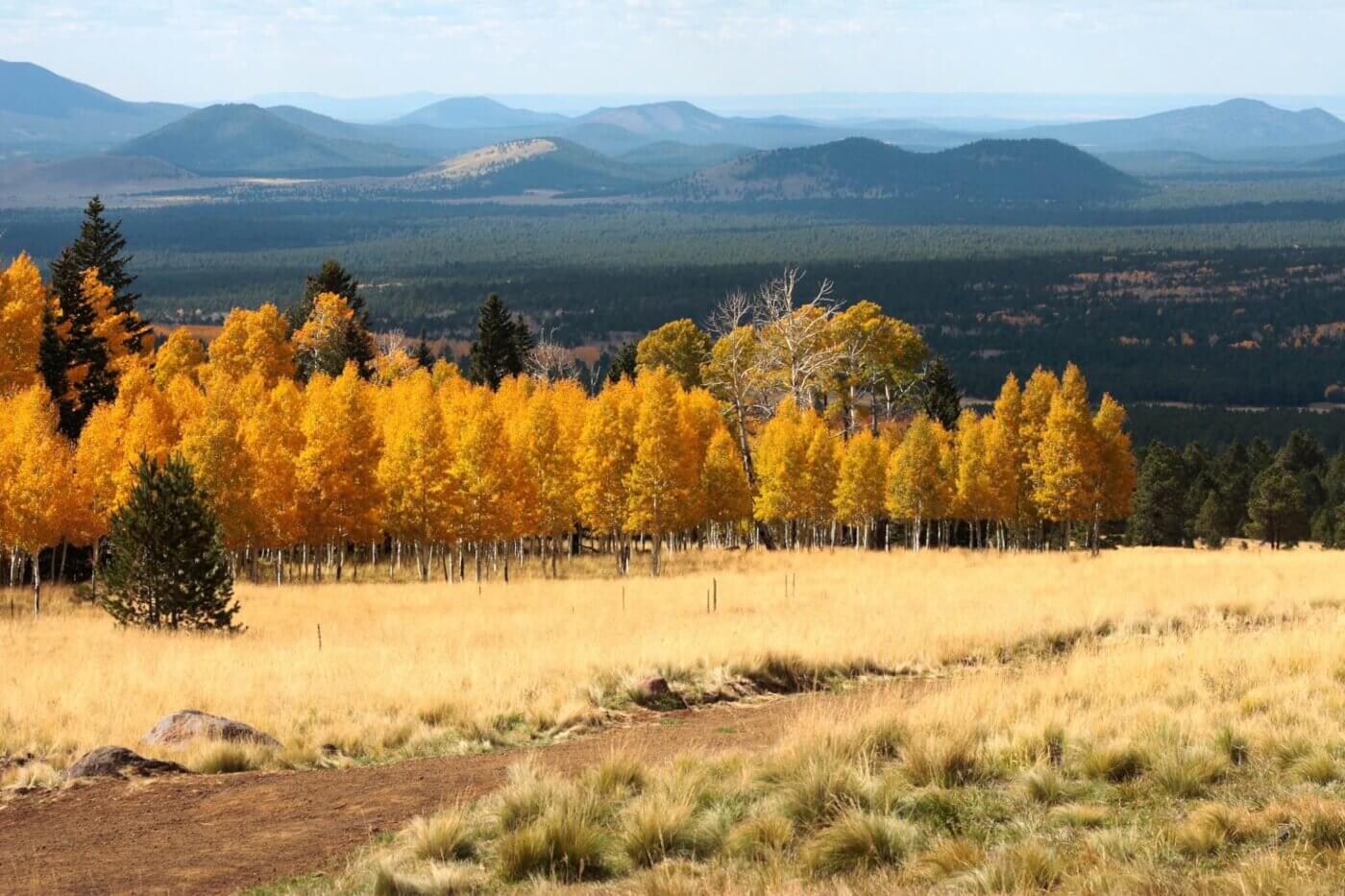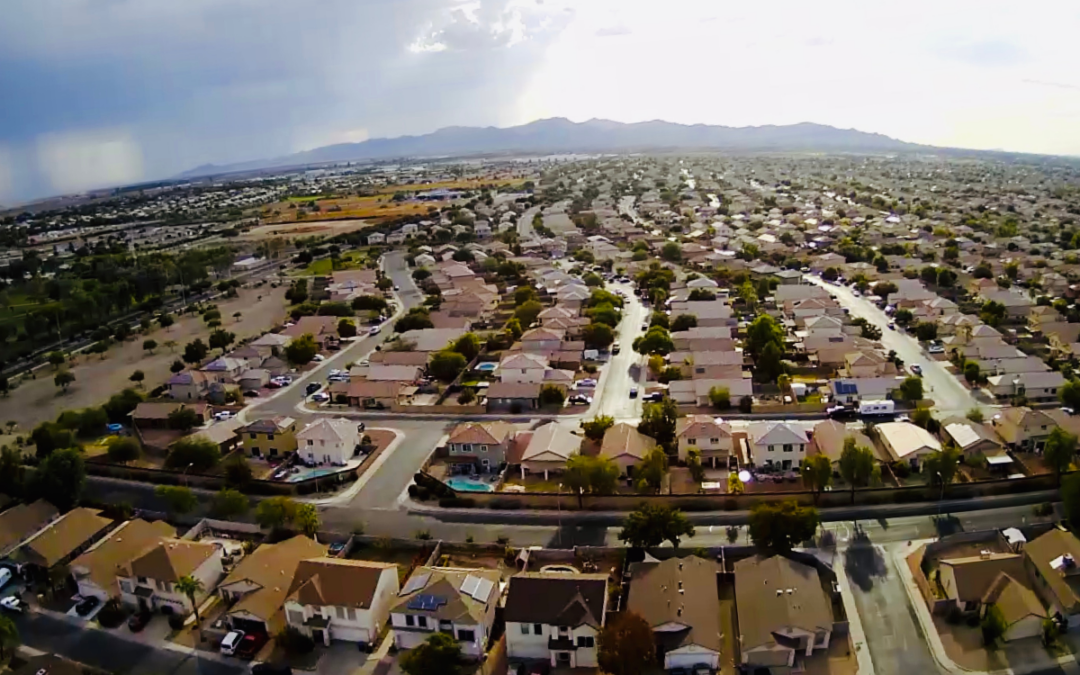
Flagstaff.
Between now through mid-December, Arizona’s trees are reaching peak vibrancy, making this the perfect time for leaf peeping in the Grand Canyon State.
Leaf peeping is a popular pastime in many parts of the US, particularly in the Midwest, the Mid-Atlantic, and New England. During the autumn months, leafy deciduous trees blanket the landscape in brilliant shades of red, orange, and yellow. But you can also find glorious displays of nature’s fall beauty in Arizona.
While the state may be best known for its desert scenery—replete with cactus, sand, and stone, if you head into the higher elevations—you’re greeted by thick forests of aspen, cottonwood, ash, birch, and crabapple.
These towering trees wrap the mountains and canyon walls in ribbons of autumnal hues. Their vibrant colors contrast with the deep greens of Northern Arizona’s ponderosa pines and frame the stately form of the saguaro in the south.
Now is the perfect time to view this technicolor display. Here are five places where you can savor the scenery.
1. Flagstaff

This northern town located about two hours and 30 minutes from Phoenix is a leaf-peeper’s paradise as golden aspens glisten against the blue sky.
Enjoy a bird’s-eye view of the colorful canopy on Arizona Snowbowl’s scenic gondola, which takes you up 11,500 feet into the San Francisco Peaks. You’ll also catch glimpses of Sedona’s red rocks and, on a clear day, the Grand Canyon.
To provide travelers with the most up-to-date information about the changing hues, the city created the Leaf-o-meter. This online resource gauges when and where fall color will be at its peak. A dropdown menu allows you to change locations; included are the City of Flagstaff, Arboretum, Snowbowl, the Inner Basin, Northern Arizona University, and Lowell Observatory.
2. Sedona

The heart of red rocks country is a popular destination year-round, but the changing leaves add to the region’s mystical allure.
The best place to view fall foliage is Oak Creek Canyon, located about 8 minutes north of downtown Sedona along Route 89A. The drive alone is beautiful but step into the woods for an immersive experience unlike any other. West Fork Trail is an easy three-mile hike that offers plenty of photo opportunities.
Red Rock State Park on the southwestern side of Sedona is another popular spot for color. Walk along the banks of Oak Creek and marvel at the bright yellow leaves of the cottonwood, ash, and alder trees. And the golden ochre of sycamore trees imparts a cozy fall vibe over the city’s landmark Mexican-style Tlaquepaque arts and shopping village.
3. White Mountains

If you’re trying to escape the leaf-peeping crowds, the White Mountains, nestled in the Apache-Sitgreaves National Forests, is a good place to start. Elevations upwards of 11,000 feet mean fall color begins in October and can last until early November.
Here, the green leaves of Gambel oaks transition into gorgeous shades of orange.
A drive along State Route 260 will take you through the picturesque towns of Pinetop-Lakeside, Greer, and Show Low. Multiple lookout points offer views of the surrounding scenery. If you have a four-wheel-drive vehicle, take Forest Road 117 to the summit of Greens Peak for an aerial view.
4. Payson

Cooler temperatures usher in the fall hiking season in Mogollon Rim Country. And with tree-lined trails designed for all fitness levels, the mountain town of Payson, a 90-minute drive from the Valley, is the perfect starting point for your leaf-peeping.
Ask any local where to begin, and you’ll most likely be directed to the See Canyon Trail. The 7.6-mile roundtrip trail ascends 1,500 feet in elevation, with golden aspens giving way to green pines. Moderately difficult with some steep inclines, it crosses Christopher Creek and runs along the rim for breathtaking views.
The 4-mile-long Horton Creek Trail follows an old wagon road alongside the perennial stream with its cascade of mini waterfalls. Here, the bright yellows of cottonwood, sycamore, and box elder are punctuated by bold pops of red and purple from sumac and the deep crimson on Virginia creeper. The mostly paved Rim Lake Vista Trail offers 3.5 miles of showy oaks that overlook the amber-colored canyon below. Wild sunflowers add to the autumnal ambiance.
5. Santa Catalina Mountains

Not to be outdone by its mountainous neighbors in the north, Southern Arizona offers its own spectacular fall displays. Starting in early to mid-October, the Santa Catalina Mountains just east of Tucson are cloaked in the yellow, orange, and red hues of aspen, oak, and maple.
Take a drive up the 27-mile-long Catalina Highway—also called the Sky Island Scenic Byway, it is officially named the General Hitchcock Highway—to the top of Mount Lemmon. As you climb 6,000 feet in elevation, the saguaros give way to deciduous trees. Stop at Windy Point, which overlooks Bear Canyon and all of Tucson.
Hiking trails, with names like Aspen Draw, Bear Wallow, and Marshall Gulch Loop, and picnic areas along the route beckon visitors to step out of their cars and view the foliage up close. And if you plan to head to the summit, make reservations to stop by the Mt. Lemmon SkyCenter Observatory for some stargazing.
Politics

The Republican war on Medicare raises the stakes in 2024
More than 1.5 million Arizonans rely on Medicare benefits—benefits they spent decades paying into, with the promise that the program would be there...

Roaming billboard targets Rep. Schweikert’s votes that ‘could outlaw IVF’
Arizonans from Phoenix to Fountain Hills had their usual view of palm trees and blue skies obscured Wednesday by a reminder that their congressional...
Local News

Biden announces new action to address gun sale loopholes
The Biden administration on Thursday announced new action to crack down on the sale of firearms without background checks and prevent the illegal...

Maricopa County, El Mirage partner to make 5 homes more affordable
The Maricopa County Board of Supervisors and city of El Mirage approved an agreement to make a handful of homes in the city more affordable. El...




